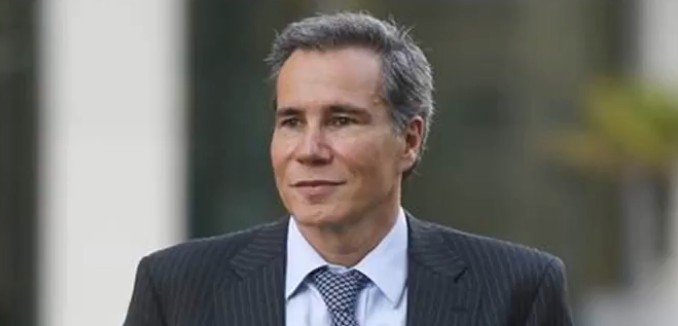It is difficult to expose the truth and seek justice when there is no trust in the legal system and there’s a lack of judicial independence facilitating impunity. Argentinian prosecutor Alberto Nisman fought against all odds and was murdered in his quest for justice.
In 1997, Nisman became involved in the investigation of the 1994 AMIA bombing—the deadliest terror attack in the Western Hemisphere prior to 9/11—and worked under two other prosecutors who were already handling the case. The trial began years later, but the investigation, headed by federal judge Juan Jose Galeano, was plagued with irregularities: Galeano bribed a suspect with $400,000 to testify against other officers under investigation, former president Carlos Menem endorsed the bribe, for what appeared to be an attempt to humiliate the governor of Buenos Aires who was a political adversary, and the role of the local police facilitating the attack was overlooked. The absurdities in the case continued and the AMIA case became one of the most high profile investigations in modern Argentinian history.
The case collapsed, and its handling became a national embarrassment. But, a year later, Nisman was appointed to lead a new AMIA investigative unit and by 2007 he charged several top Iranian officials, including former President Ali Akbar Rafsanjani as well as Hezbollah leaders, for carrying out the attack. Interpol issued “red notices,” which are similar to arrest warrants. Iran, not surprisingly, refused to extradite the suspects, denied its role in the terror attack, and ignored Interpol’s red notices.
Nisman became an expert on terrorism. He documented how Iran and its proxy Hezbollah were penetrating Latin America and building clandestine intelligence stations to plan and execute terror attacks. The Tri-Border area between Argentina, Paraguay and Brazil had become a hotspot for this. The prosecutor warned of the grave danger of Iranian extremist networks and influence in the region. The threat continues today, and as Matthew Levitt wrote recently in a Politico magazine piece, the Trump administration plans to aggressively disrupt Hezbollah’s operations and financial activities in the Americas.
Nisman and his two young daughters received multiple death threats, some of them included gruesome photographs of the consequences for him and his family. He was insulted and was referred to as a “Zionist” and a “dirty Jew.” His investigation exposed him to the enormous risks of going after a terror-sponsor state and his own government, and although he was assigned a security team, he felt he could no longer trust his own bodyguards.
After she succeeded her husband, President Cristina Fernandez de Kirchner moved to end her husband’s hardline policy against Iran, and this rapprochement facilitated a shift in Argentinian politics. The 2013 secret pact between Buenos Aires and Tehran, negotiated by former Foreign Minister Hector Timerman, attempted to create a joint truth commission to investigate the AMIA case. The thought of a terror-sponsor state like Iran investigating itself was nothing short of laughable, although many of Kirchner’s supporters applauded the diplomatic endeavor. Nisman would later charge Kirchner along with several of her colleagues and confidantes of covering-up Iran’s involvement in the attack with the pact and obstructing justice– which ultimately ended up costing him his life.
There is no denying of Nisman’s dedication to his work and the AMIA case became part of Nisman’s identity. On his WhatsApp picture, he used the slogan “keep calm and we don’t negotiate with terrorism.” He was energetic and had a deep passion for bringing justice to the 85 AMIA victims’ families.
Three years ago, Nisman cut his family vacation abroad short, and returned to file his 289-page report against Kirchner.
The prosecutor was found dead on January 18th, 2015, the day before he was to present his findings before Congress. Fingers were quickly pointed at Iran, the Intelligence Secretariat (dissolved soon after Nisman’s death), and Kirchner herself. Shortly after his death, Kirchner claimed first that Nisman committed suicide, then that it was a crime of passion, and later that it was the result of an intelligence operative to undermine and destabilize her government. In 2017, official reports confirmed that Nisman was drugged, beaten, and murdered, possibly by more than one person.
On several occasions since his death, Nisman’s charges against Kirchner and her government officials were dismissed as “baseless.” However, in August of 2016, a federal judge ordered the reopening of the criminal complaint. This past December, Argentinians woke up to a political earthquake after the former President and several of her colleagues were charged with treason. Several of Nisman’s bodyguards were also charged for neglecting their duties, and his computer technician and aide, Diego Lagomarsino, whose gun was used to kill Nisman, was charged with accessory to murder.
This year’s anniversary of Nisman’s death should be treated differently. We might never know what happened during the hours before he was found dead in his Le Parc Towers apartment, but we do know that a man’s bravery and fearlessness led authorities closer to solving an investigation that has lasted more than twenty years.
After years of delay, Argentinian authorities, under President Mauricio Macri, seem determined to solve the remaining mysteries of the AMIA bombing, reverse Kirchner’s rapprochement with Iran, and bring Nisman’s killers to justice.
Argentinians are not used to seeing powerful people being held accountable, but that is a result of Nisman’s courage and persistence. It is because of those traits of Nisman, who was killed three years ago, that we might be closer to justice for the victims of the AMIA bombing and their families.
[Photo: Noticias De Ultima Hora 24 Horas / YouTube]




